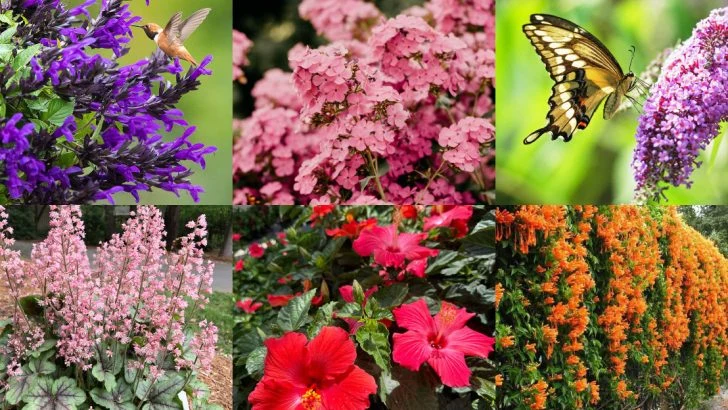Hummingbirds aren’t visiting your yard because they’re polite— they’re chasing sugar like it’s liquid gold. These tiny flying jewels have one thing on their mind: nectar. And if your garden isn’t offering the good stuff, they’ll zip right past you with a dramatic wing-flap of disapproval. Feed them well, though? They’ll stick around, guard their turf like glittery warriors, and put on an aerial show that rivals the best fireworks. The trick is planting shrubs that don’t just bloom, but tempt. Big color. Sweet rewards. A reliable buffet from spring through fall. Ready to be the most popular stop on the hummingbird tour? These 16 shrubs are like neon signs for nectar lovers— and once you plant them, the sky won’t be so quiet anymore.
Salvia
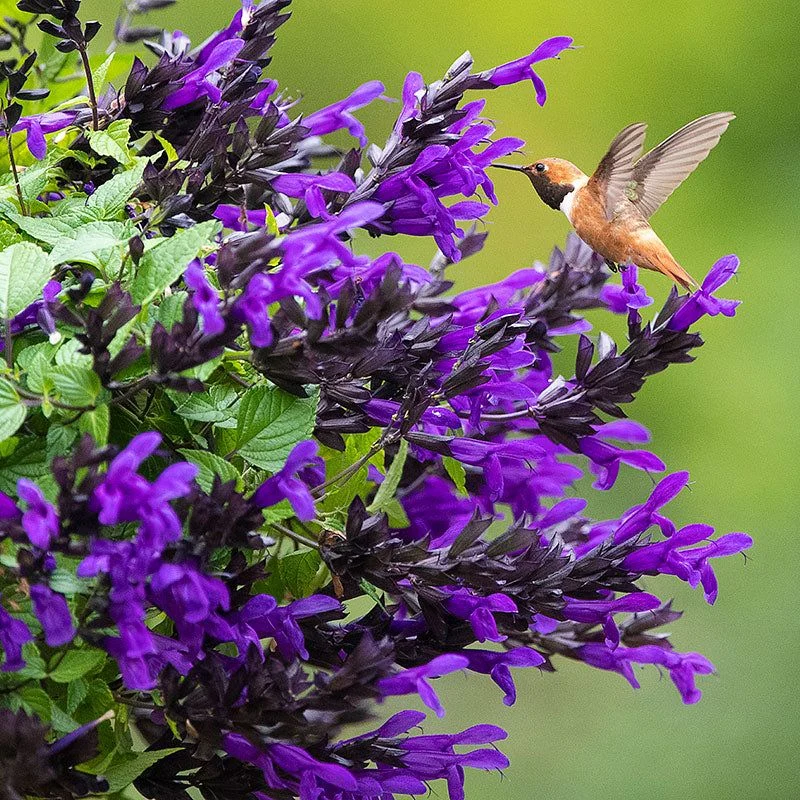
Salvia, with its vivid red spikes, creates a captivating spectacle in any garden setting. Hummingbirds are particularly drawn to its tubular blooms, which offer a rich source of nectar. Planting Salvia ensures a regular visit from these energetic flyers.
Beyond its allure to birds, Salvia is easy to maintain and thrives in various climates. It is drought-tolerant and loves basking in the sun. Its aromatic foliage adds an extra layer of sensory delight.
An added bonus is its resistance to deer, making it a resilient garden choice.
Butterfly Bush

Known for its cascading clusters of purple flowers, the Butterfly Bush is a magnet for pollinators. Its sweet fragrance is irresistible to hummingbirds, ensuring their frequent visits. The bush’s long blooming season provides ample feeding opportunities.
This shrub is not only a visual delight but also a hardy addition to any garden. It grows vigorously and can adapt to different soil types. Pruning helps maintain its shape and encourages more blooms.
Its name hints at its popularity among butterflies, adding to the garden’s lively ecosystem.
Red Hot Poker
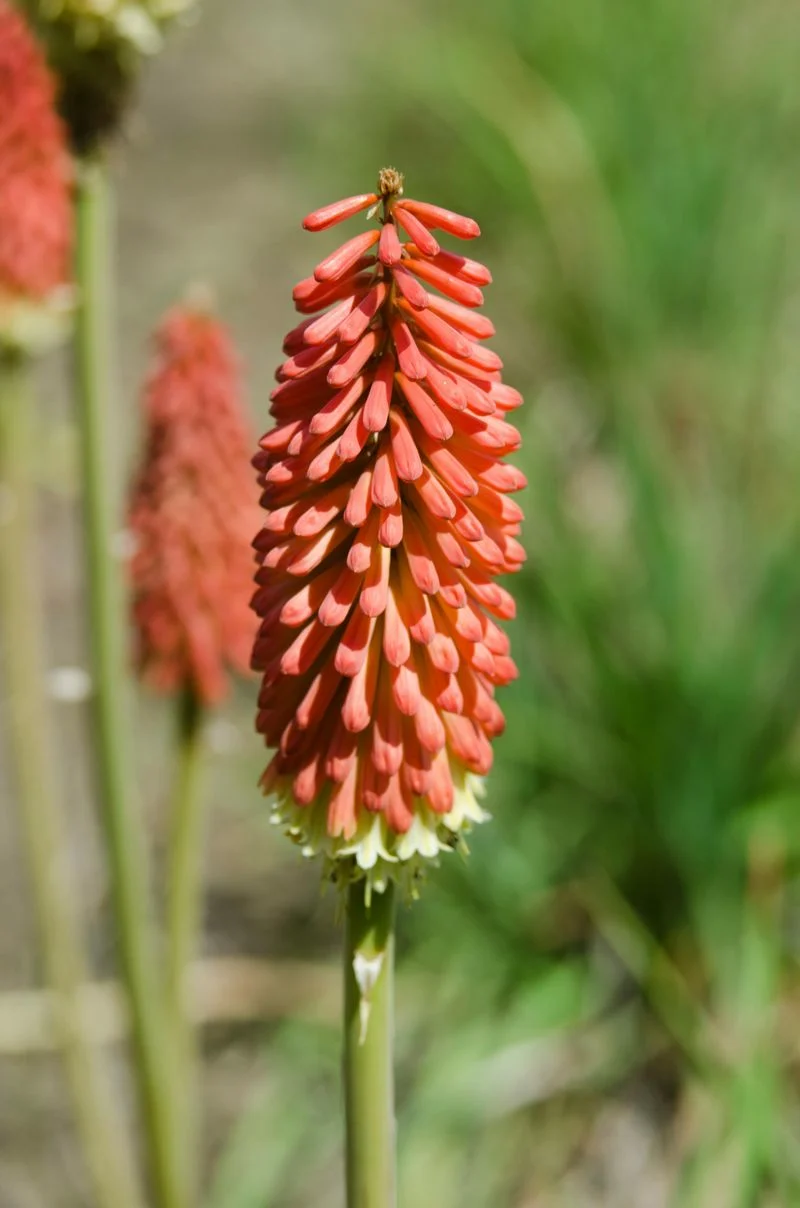
The Red Hot Poker, aptly named for its vibrant, torch-like blooms, is a favorite among hummingbirds. These fiery flowers stand tall and proud, offering both height and color to your garden.
Hummingbirds are naturally attracted to its red and orange hues, which signal a rich nectar source. The plant thrives in sunny spots and well-drained soil, ensuring it lights up your garden year after year.
Its unique bloom shape and warm colors make it a standout addition, drawing attention from humans and birds alike.
Weigela
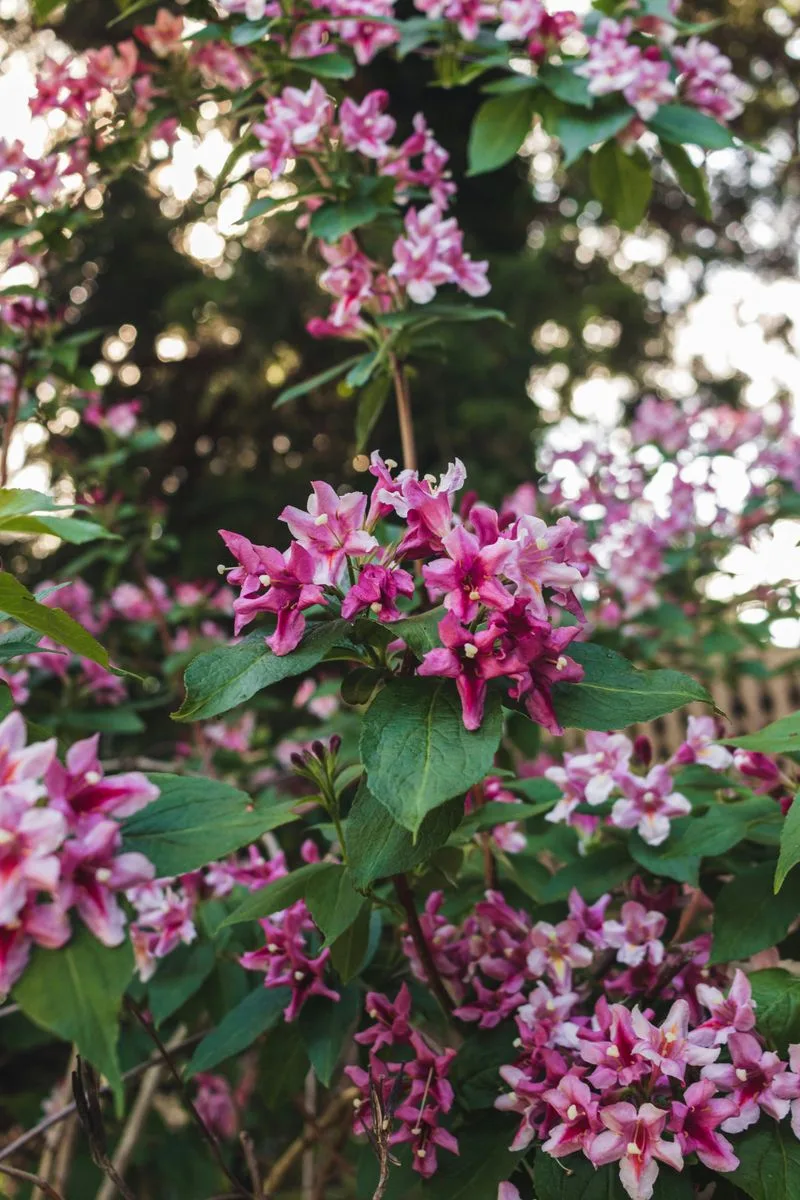
Weigela, with its abundant pink blossoms, is a delightful addition to any landscape. The trumpet-shaped flowers are not only visually striking but also perfect for hummingbirds’ feeding habits.
This shrub is versatile, thriving in both sun and partial shade. It blooms in late spring and can rebloom throughout the summer, providing continuous nectar.
Weigela’s lush foliage and vibrant blooms make it an ornamental treasure. Regular pruning helps maintain its shape and encourages more flowers, enhancing its allure for hummingbirds.
Fuchsia

Fuchsia’s delicate, dangling flowers offer a whimsical touch to gardens, with their pink and purple hues drawing the eyes. Hummingbirds find these blooms irresistible, thanks to their rich nectar content.
The plant prefers partial shade, making it ideal for areas not fully exposed to the sun. It’s a versatile shrub that can thrive in pots or directly in the ground.
Caring for Fuchsia involves regular watering and deadheading spent blooms to promote continuous flowering, keeping the hummingbirds coming back for more.
Coral Bells
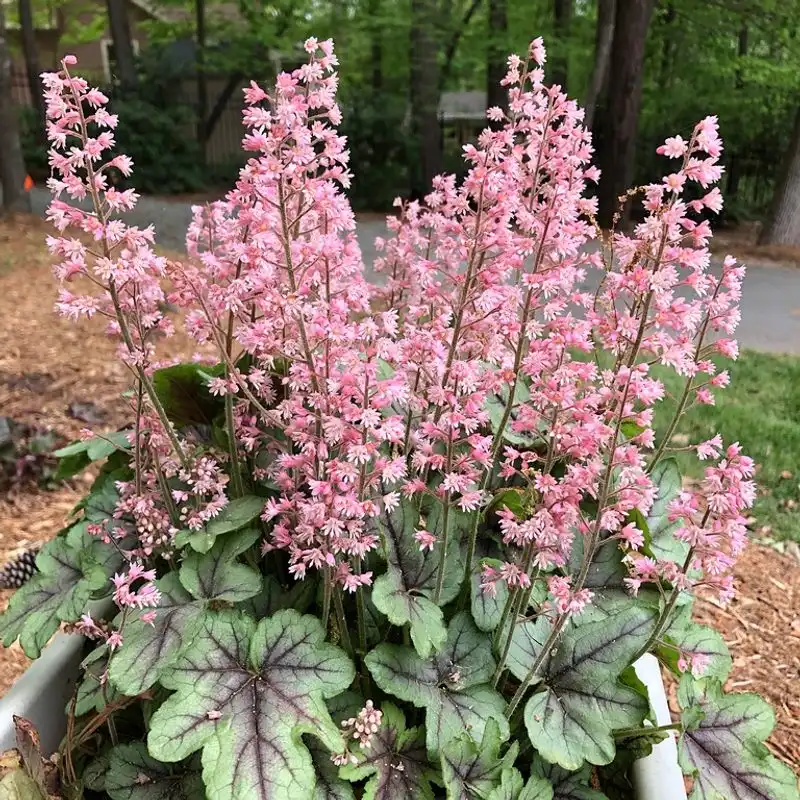
Coral Bells, known for their striking foliage and delicate blooms, provide a wonderful nectar source for hummingbirds. The small, bell-shaped flowers add an understated elegance to any garden.
These plants are versatile, growing well in both sun and shade. Their colorful leaves also offer visual interest when the flowers are not in bloom.
To keep Coral Bells thriving, ensure the soil is well-drained and provide regular watering. This will encourage a profusion of blooms and keep those hummingbirds happily feeding.
Hibiscus
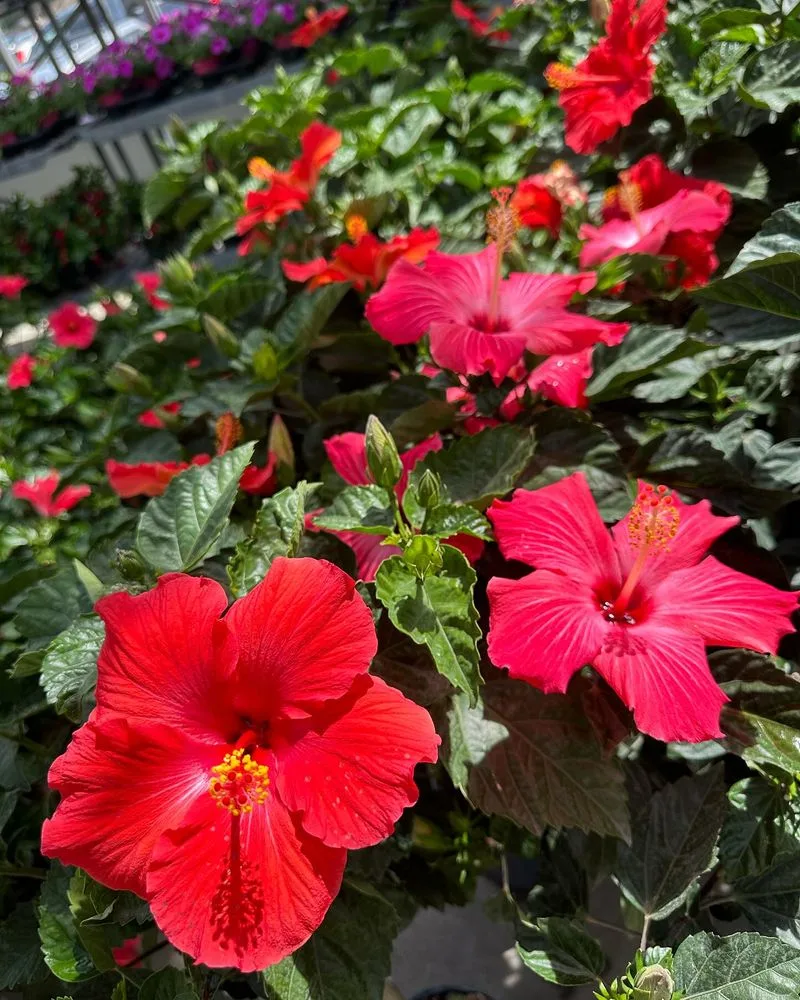
Hibiscus shrubs, with their large, showy flowers, are a tropical delight for both humans and hummingbirds. The bright red blossoms are particularly attractive to these birds, offering a rich nectar feast.
Though they prefer a sunny location, Hibiscus plants need regular watering to keep their blooms vibrant. These shrubs can become a garden centerpiece, drawing attention with their striking appearance.
Pruning and removing spent flowers will help maintain their beauty and ensure a continuous supply of nectar for visiting hummingbirds.
Azalea
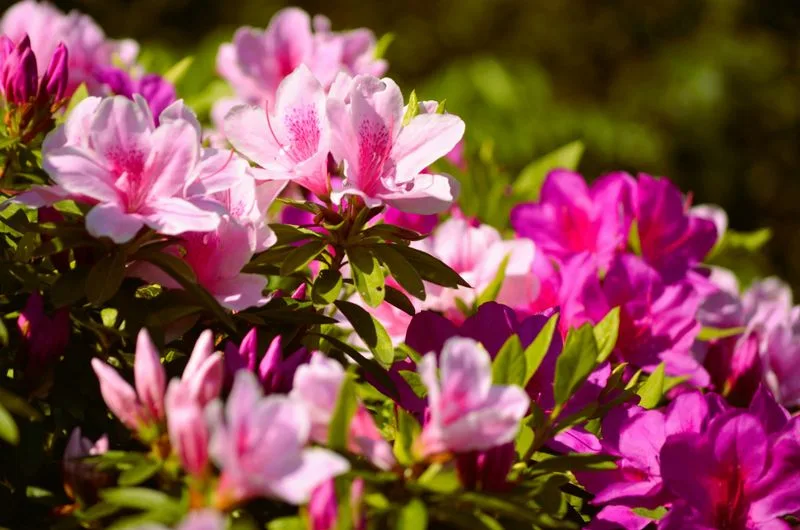
Azaleas, with their profusion of blooms, create a spectacular display in gardens. The pink flowers are a nectar-rich haven for hummingbirds, ensuring your garden buzzes with life.
These shrubs thrive in acidic soil and prefer dappled sunlight, making them ideal for woodland gardens. Their lush, green foliage complements the vibrant blooms beautifully.
To keep Azaleas healthy and blooming, regular pruning is essential. This promotes better growth and more flowers, enhancing their appeal to both hummingbirds and garden enthusiasts.
Rhododendron
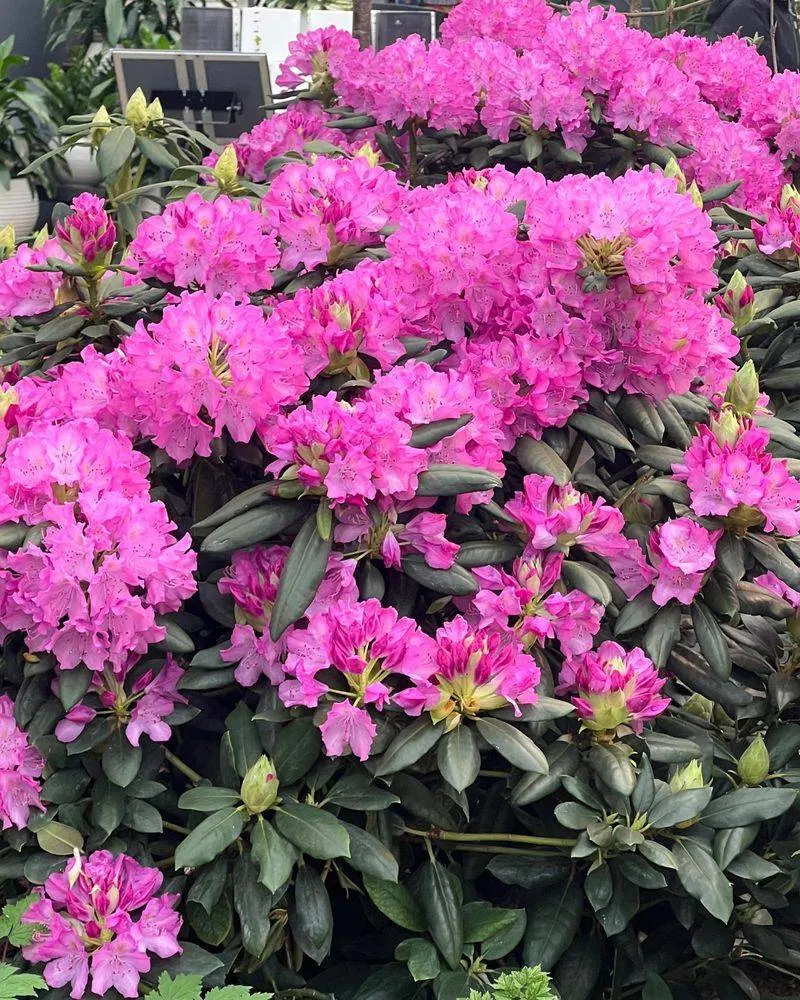
Rhododendrons are known for their large, clustered flowers that range in color from purple to pink. These lush blooms are not only a visual treat but also a rich nectar source for hummingbirds.
Preferring acidic, well-drained soil, Rhododendrons thrive in shaded to partially sunny areas. Their impressive floral display makes them a garden favorite.
Caring for Rhododendrons involves ensuring adequate water and nutrition, particularly in the blooming season, to support their vibrant flowers and attract more hummingbirds.
Camellia
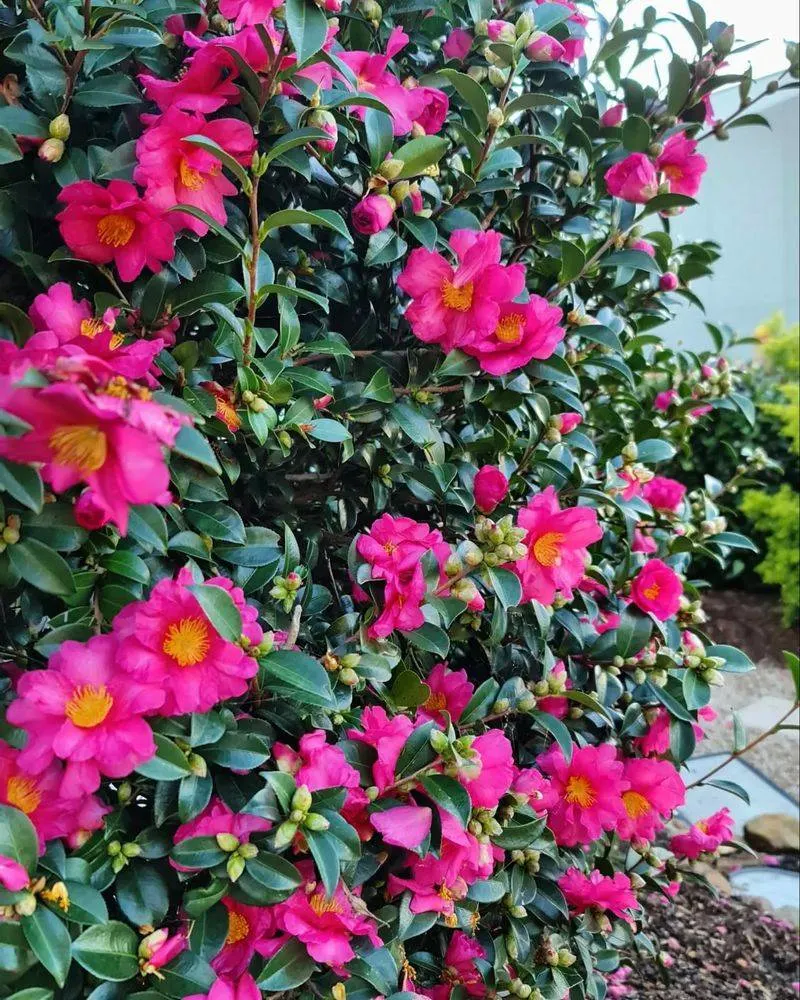
Camellias, with their elegant pink blooms, bring a touch of grace to gardens. The flowers’ nectar is a delightful treat for hummingbirds, attracting them with its sweet offerings.
These shrubs prefer well-drained, acidic soil and thrive in partially shaded areas. Their glossy, evergreen leaves provide year-round interest, even when not in bloom.
To encourage a profusion of flowers, regular watering and feeding are essential. Camellias’ beauty and nectar make them a cherished part of any hummingbird-friendly garden.
Bottlebrush
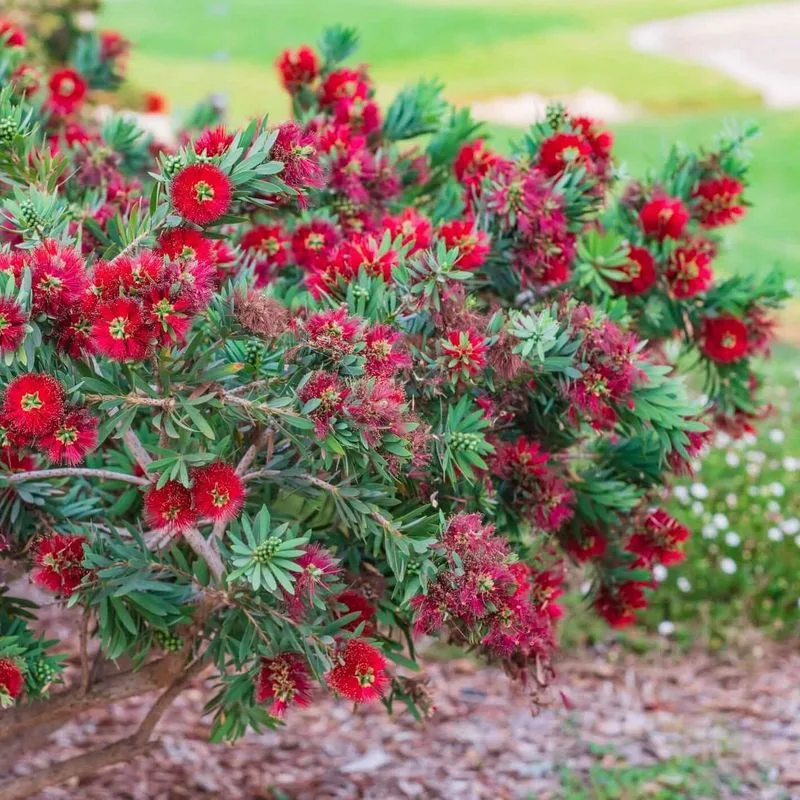
The Bottlebrush, a striking shrub native to Australia, is adored for its unique red, brush-like flowers. These blooms are rich in nectar, making them a favorite among hummingbirds.
Bottlebrush thrives in sunny, well-drained locations and can tolerate drought once established. Its striking appearance adds a distinctive flair to gardens, reminiscent of the Australian outback.
Regular pruning helps maintain its shape and encourages more flowers, ensuring a continuous nectar supply for hummingbirds and other pollinators.
Mexican Honeysuckle
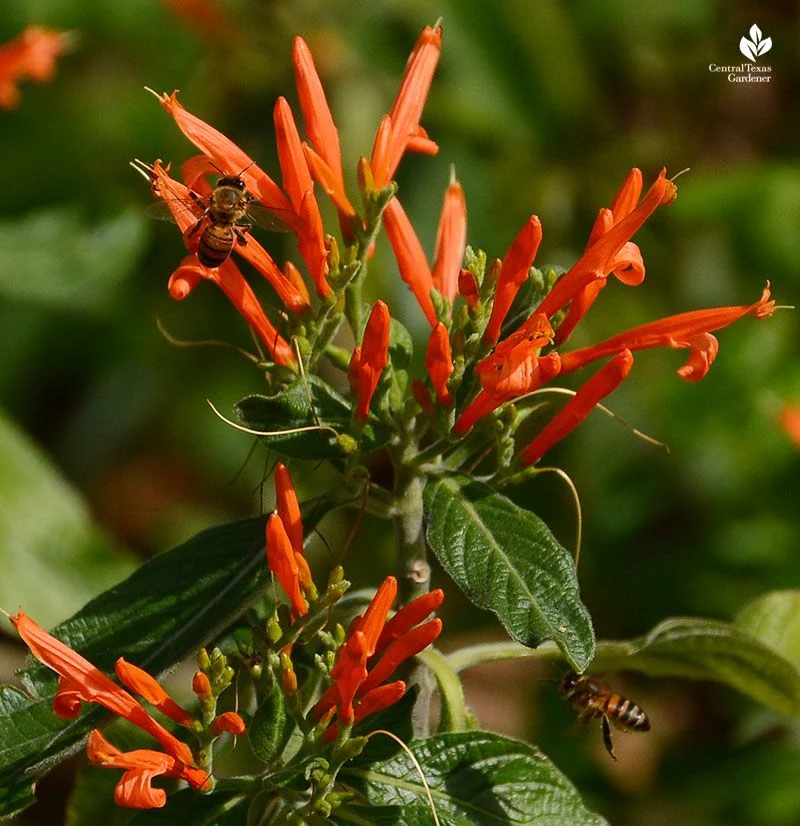
Mexican Honeysuckle, with its vibrant orange tubular flowers, is a delightful addition to any garden. The blooms are a favorite among hummingbirds, offering a sweet nectar treat.
This shrub is well-suited to sunny locations and can tolerate dry conditions once established. Its lush, green foliage complements the vivid flowers beautifully.
To ensure a healthy display, provide regular watering and occasional pruning. Mexican Honeysuckle’s vibrant color and nectar-rich flowers make it a hummingbird’s paradise.
Trumpet Vine
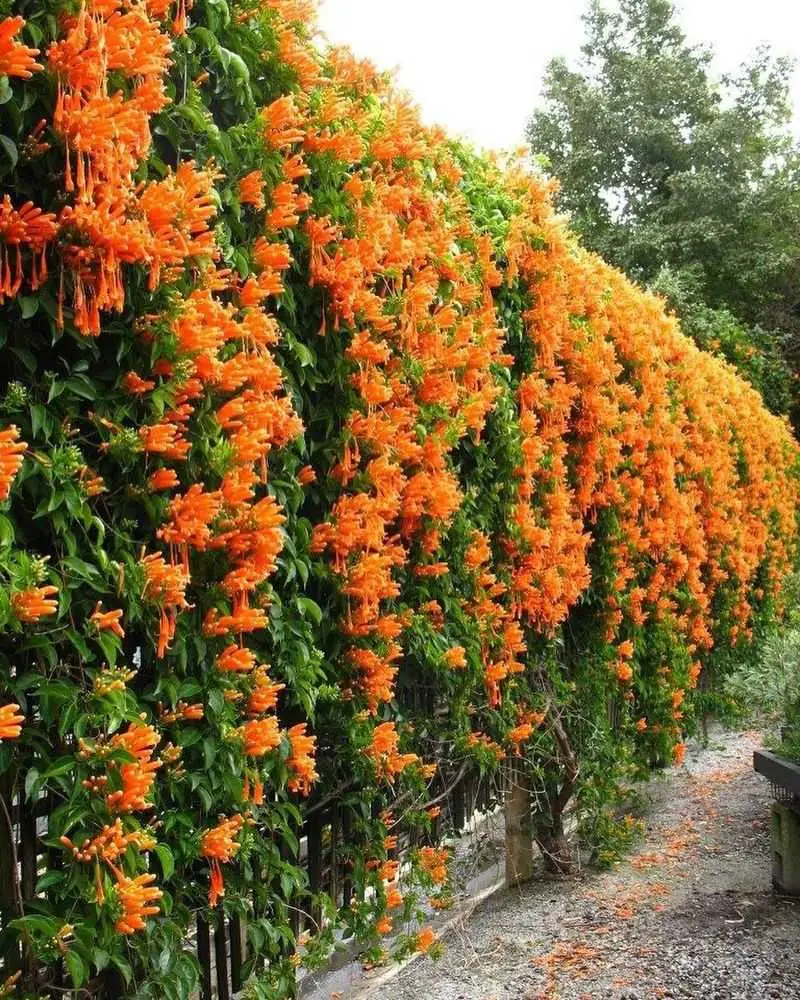
The Trumpet Vine, known for its vigorous growth and bright orange flowers, is a magnet for hummingbirds. Its trumpet-shaped blooms are perfectly designed for these birds to access the nectar within.
This climbing plant thrives in sunny areas and can quickly cover structures, adding vertical interest to gardens. Regular pruning is essential to keep its growth in check and encourage more blooms.
With its striking flowers and rapid growth, the Trumpet Vine is a dynamic addition to any hummingbird-friendly landscape.
Firebush
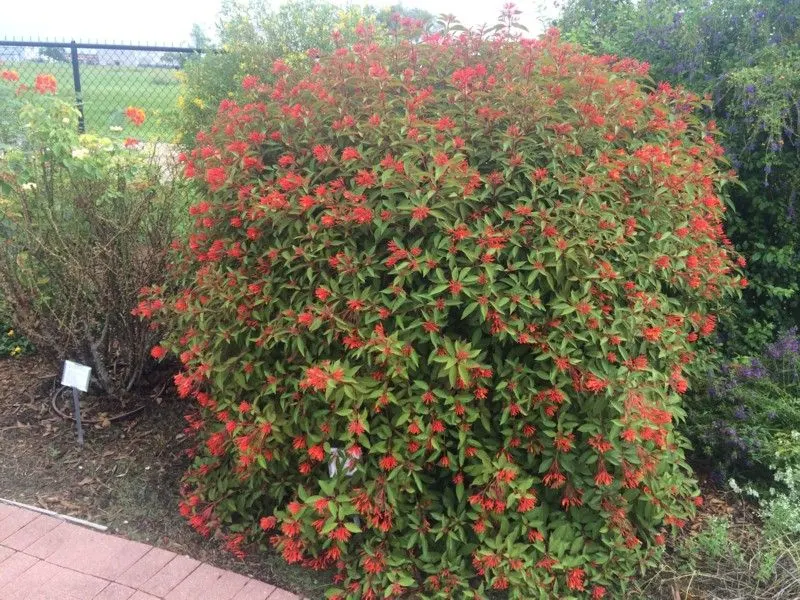
Firebush, with its blazing red blooms, offers a fiery splash of color to gardens. These flowers are a nectar-rich delight for hummingbirds, ensuring regular visits.
This shrub thrives in warm climates, preferring full sun and well-drained soil. Its lush green foliage provides a striking contrast to the vivid flowers.
To keep Firebush looking its best, regular watering and occasional pruning are recommended. Its vibrant blooms and ability to attract hummingbirds make it a standout choice for tropical gardens.
Abelia
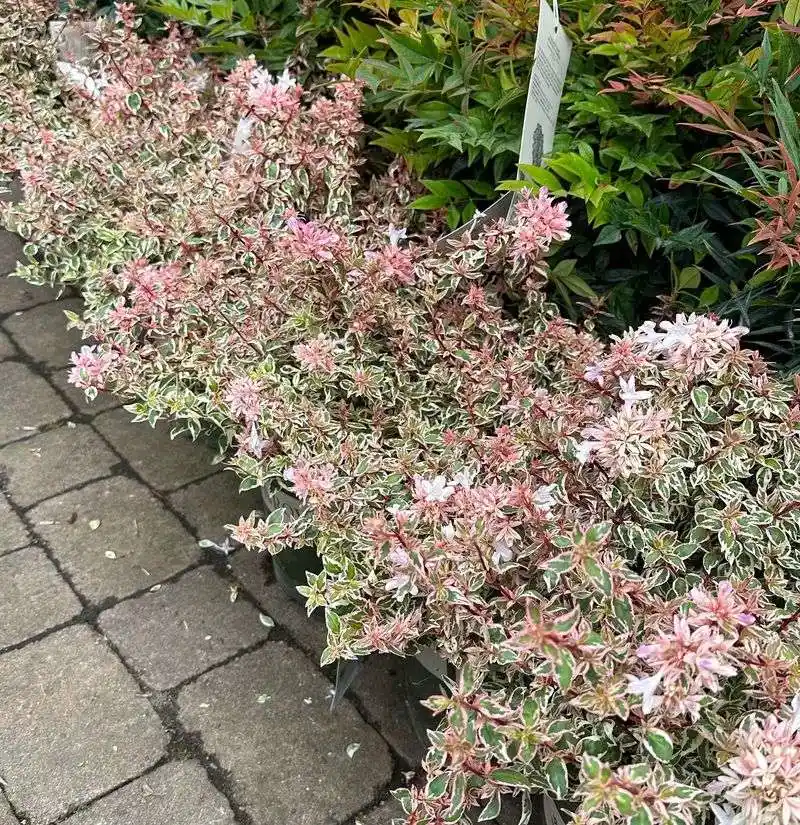
Abelia is cherished for its fragrant white flowers and glossy leaves. The blooms are a nectar-rich offering for hummingbirds, complementing any garden with their subtle beauty.
This shrub thrives in both sun and partial shade, adapting well to various soil types. Its long blooming season ensures a consistent food source for hummingbirds.
Pruning helps maintain its compact shape and encourages more flowers. Abelia’s combination of fragrance and nectar makes it a gentle and inviting presence in the garden.
Cape Honeysuckle
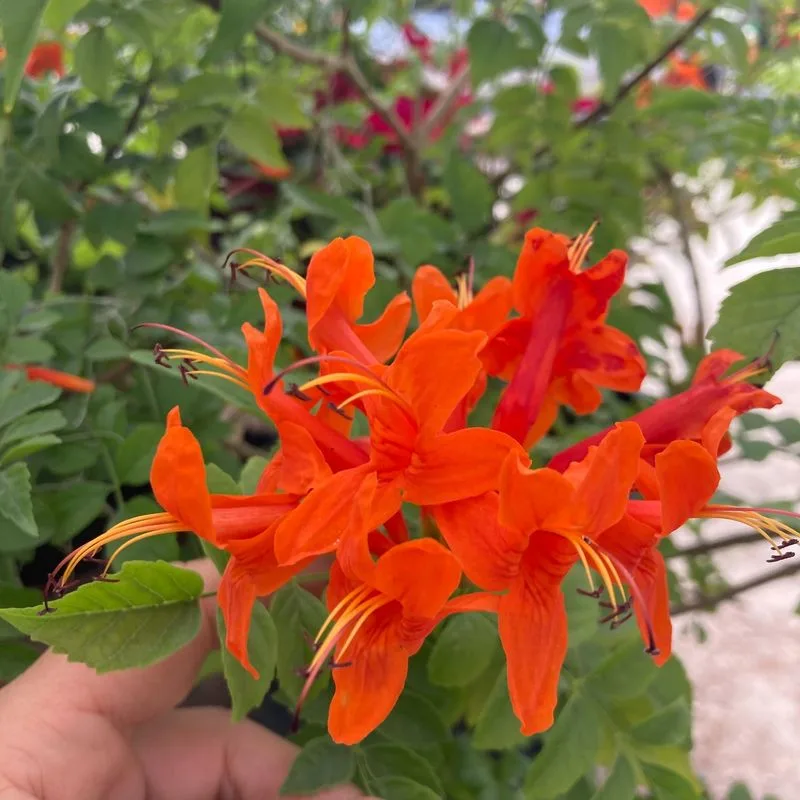
Cape Honeysuckle, with its vibrant orange tubular flowers, is an eye-catching addition to gardens. Hummingbirds are drawn to its rich nectar, making it a popular choice for attracting these birds.
This shrub is versatile, thriving in both full sun and partial shade. Its vigorous growth and bright blooms add a lively touch to any landscape.
Regular pruning keeps it tidy and promotes more blooms. Cape Honeysuckle’s radiant flowers and nectar-rich offerings create a welcoming environment for hummingbirds.

